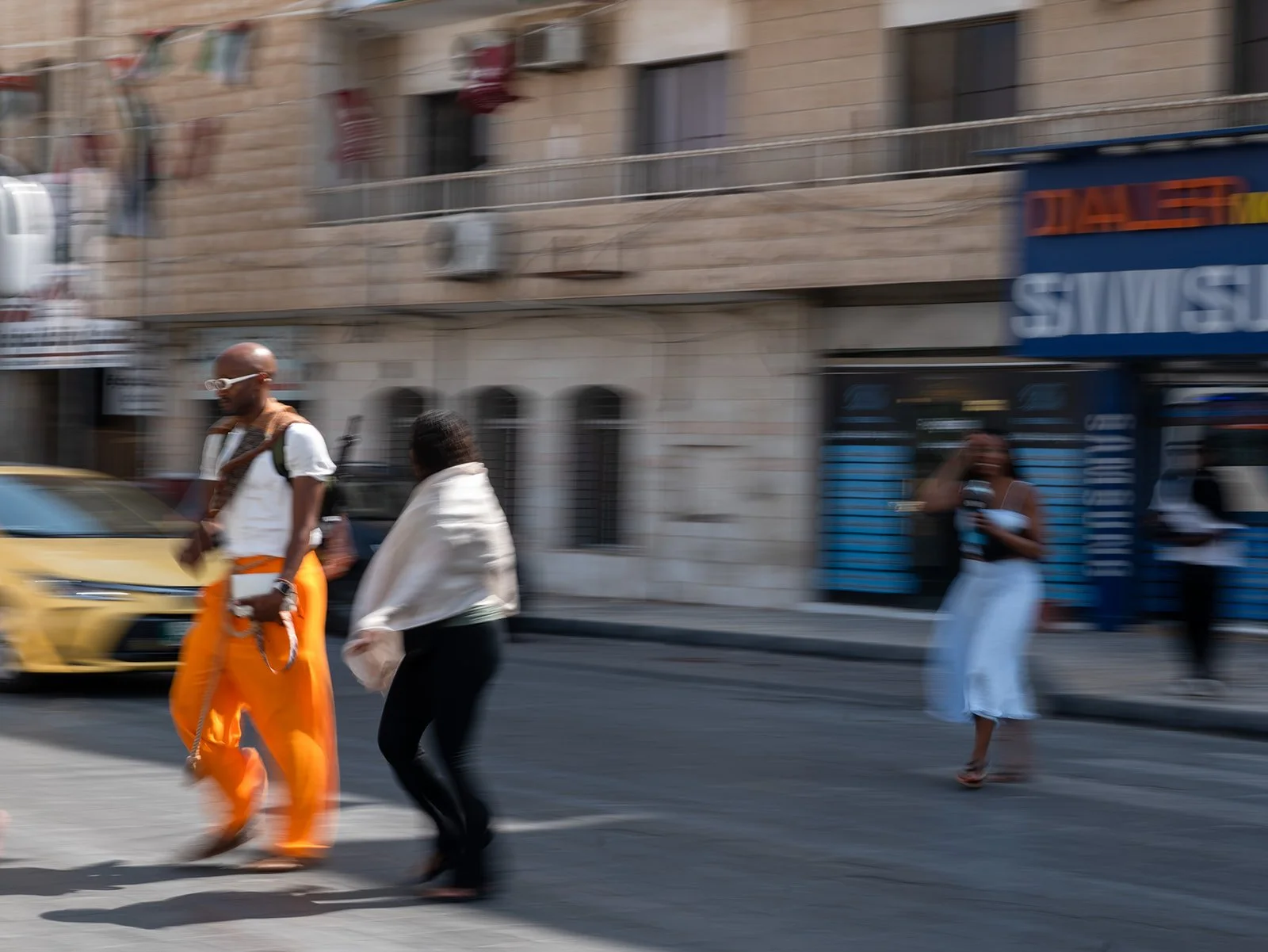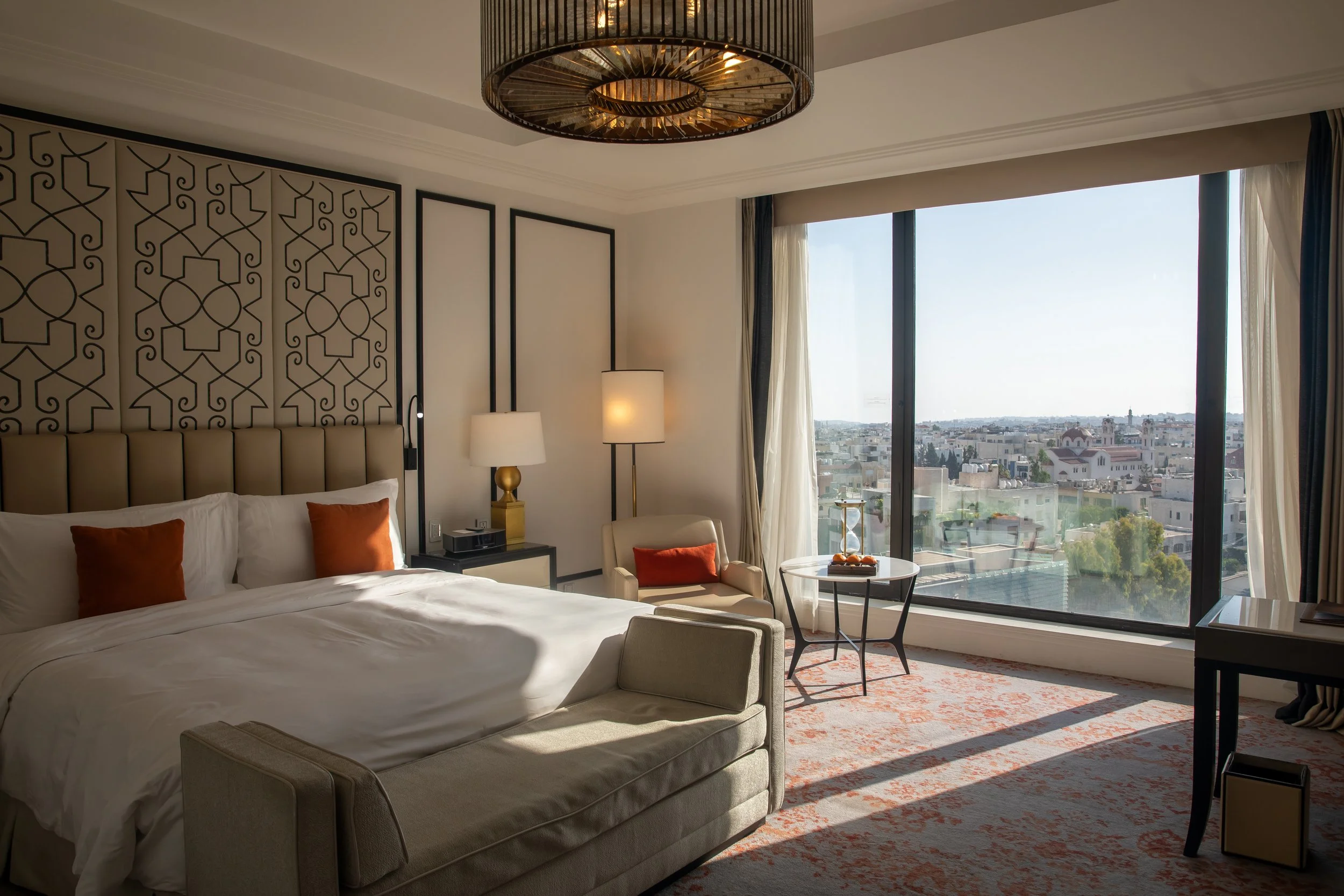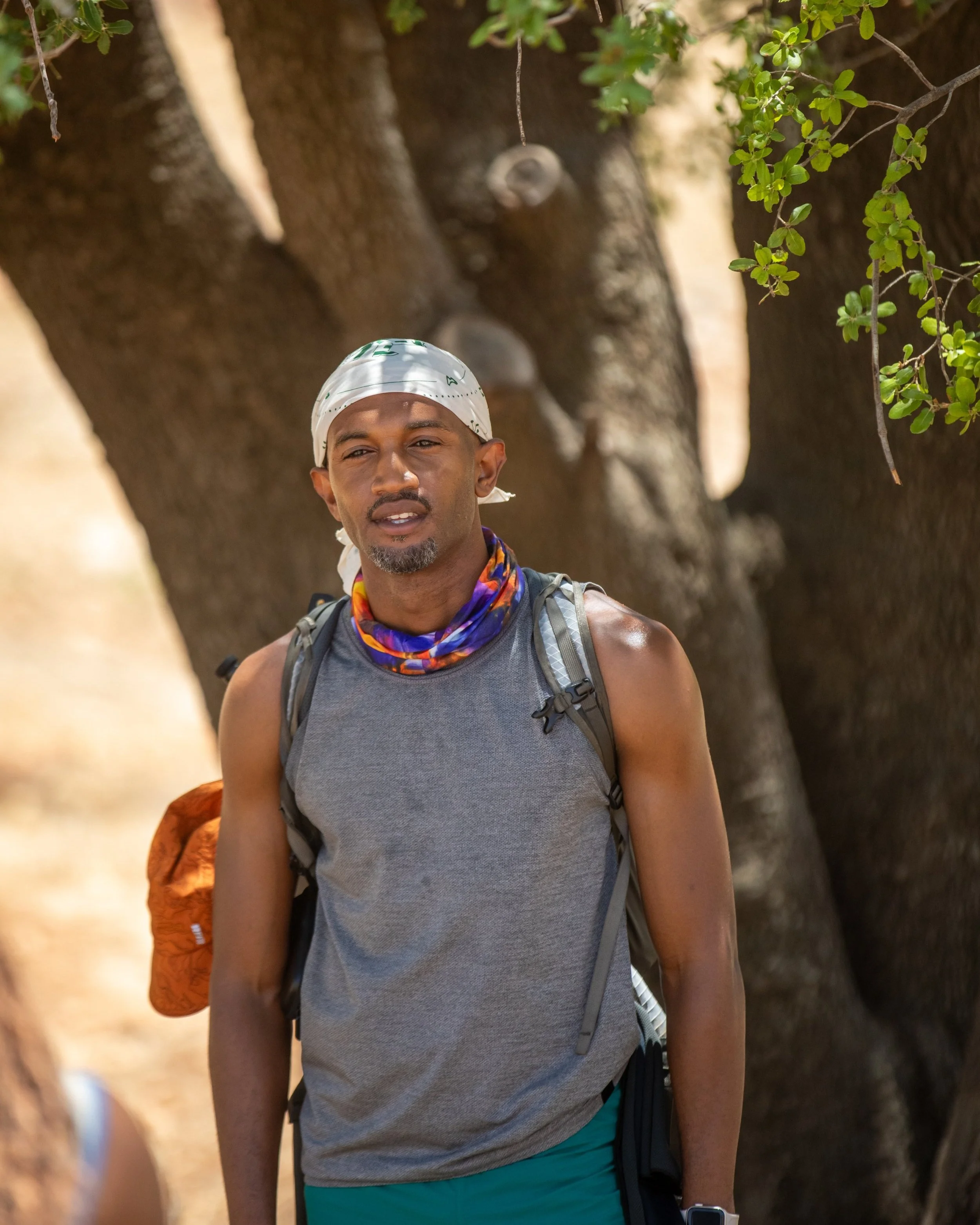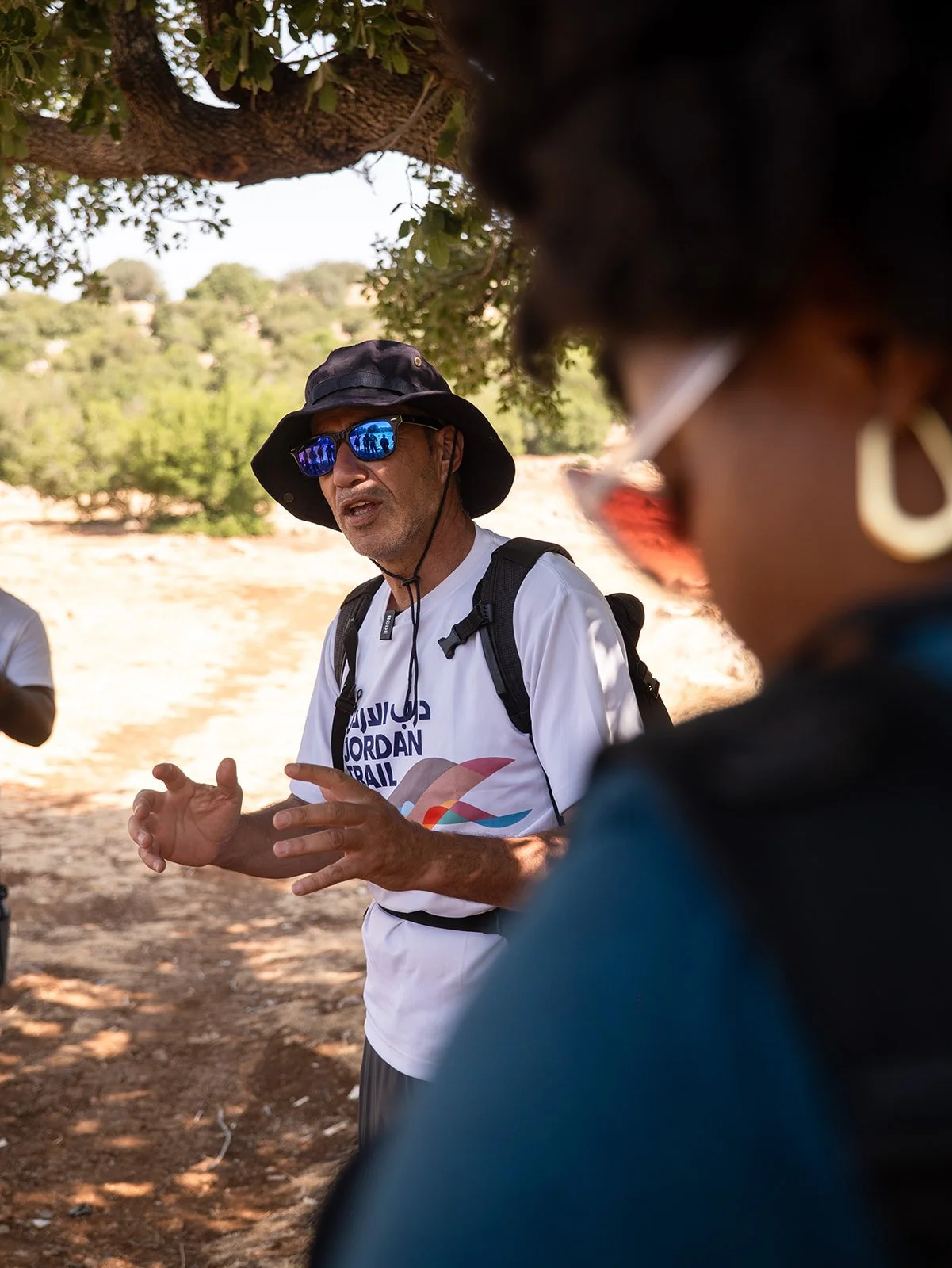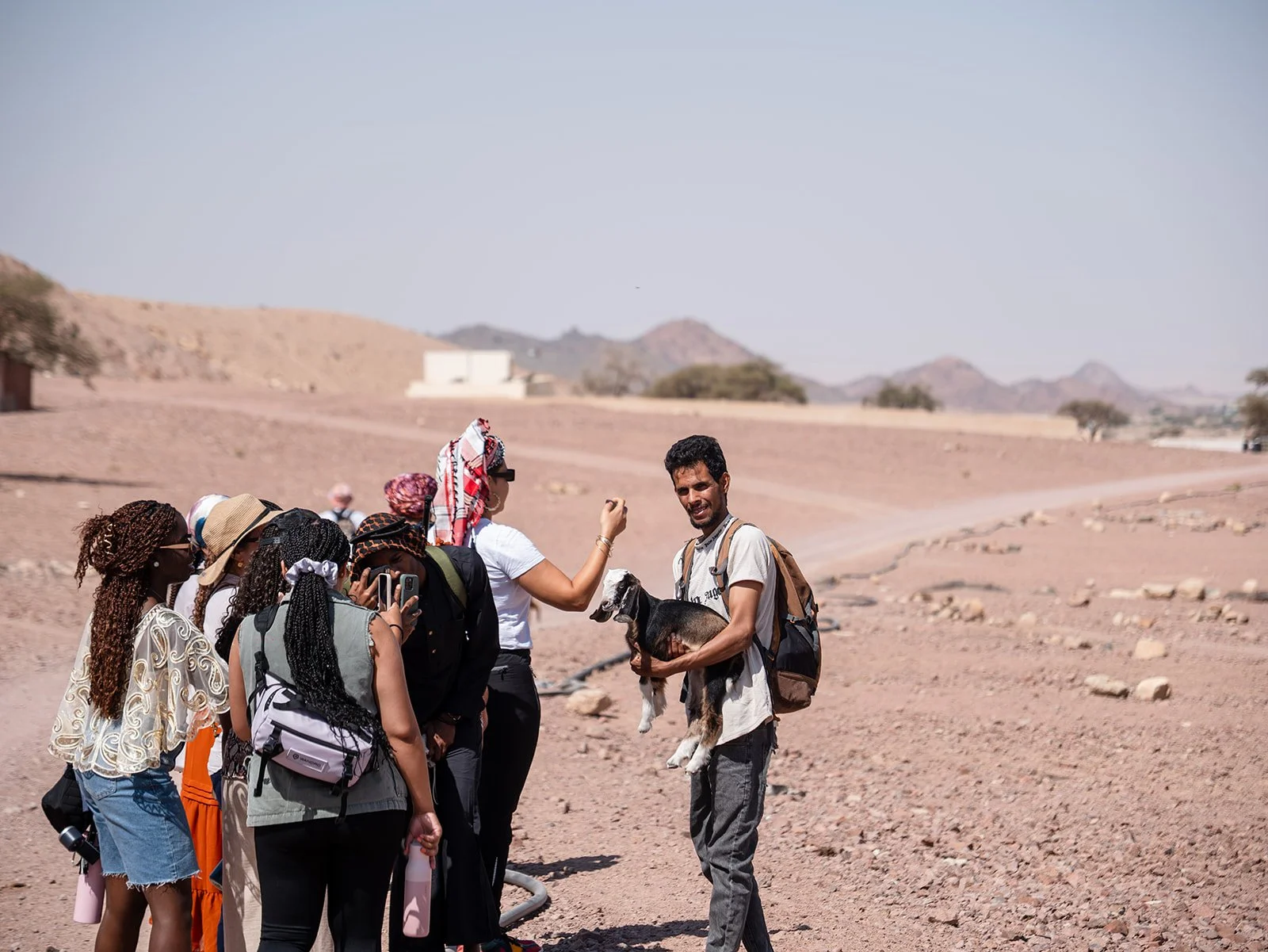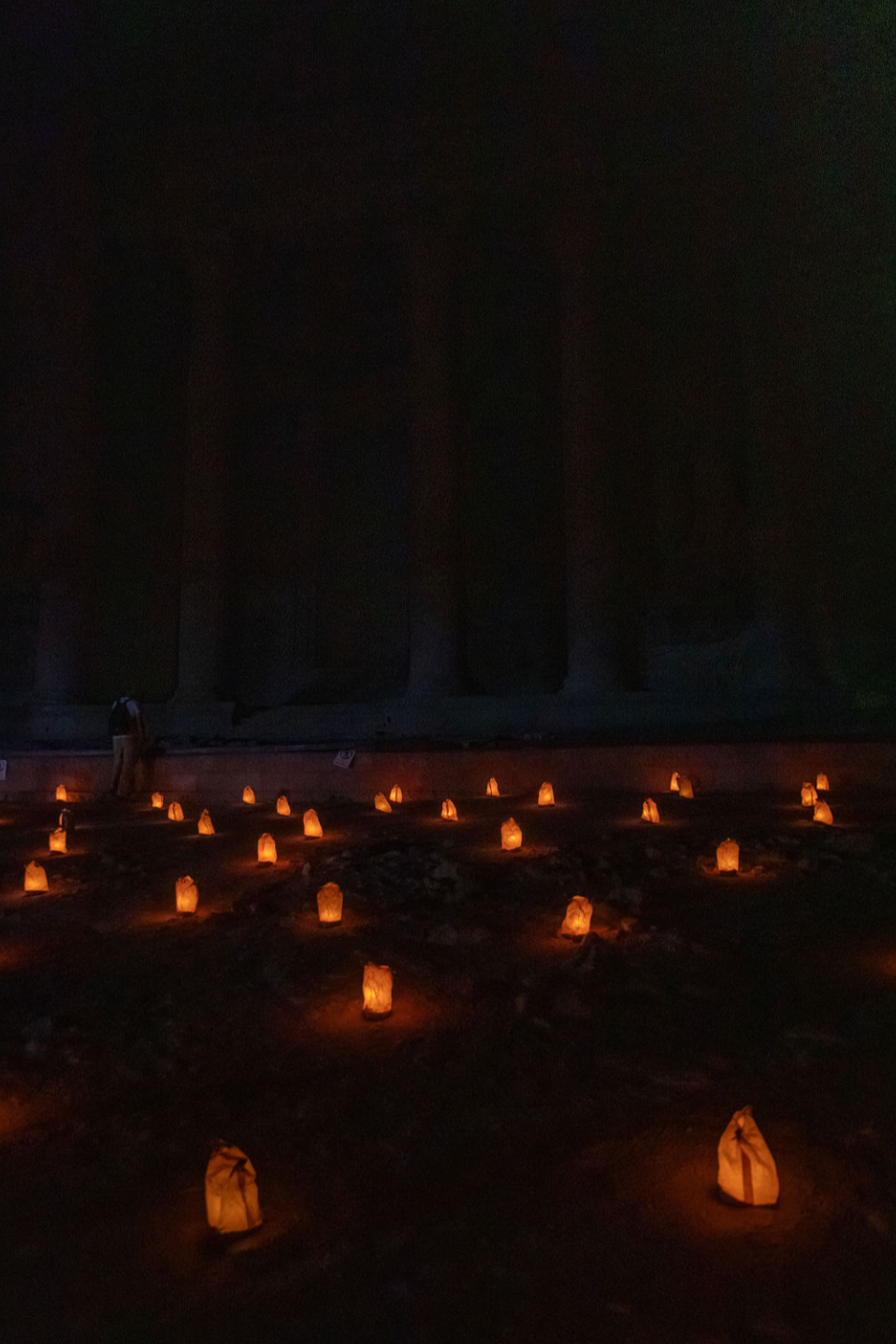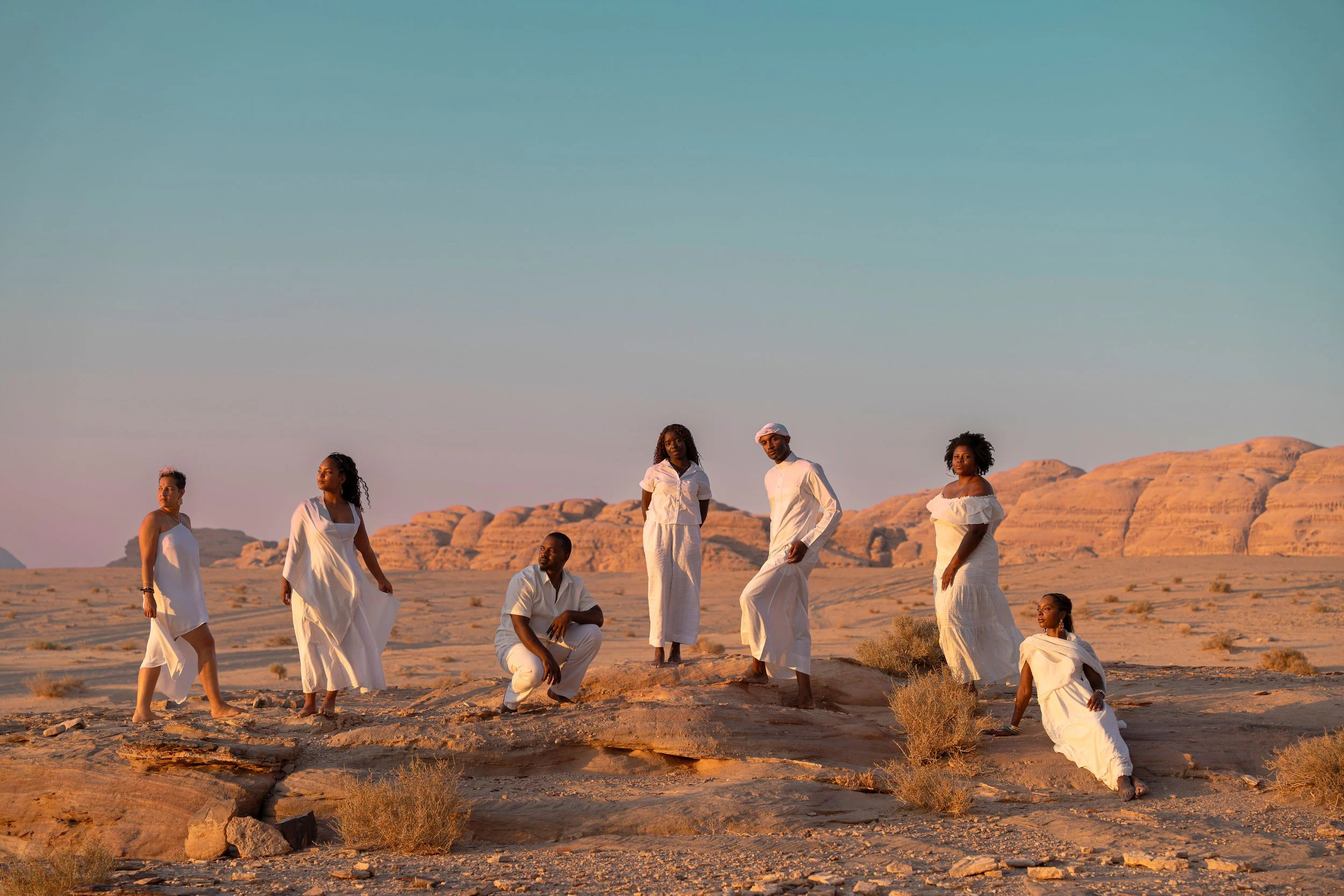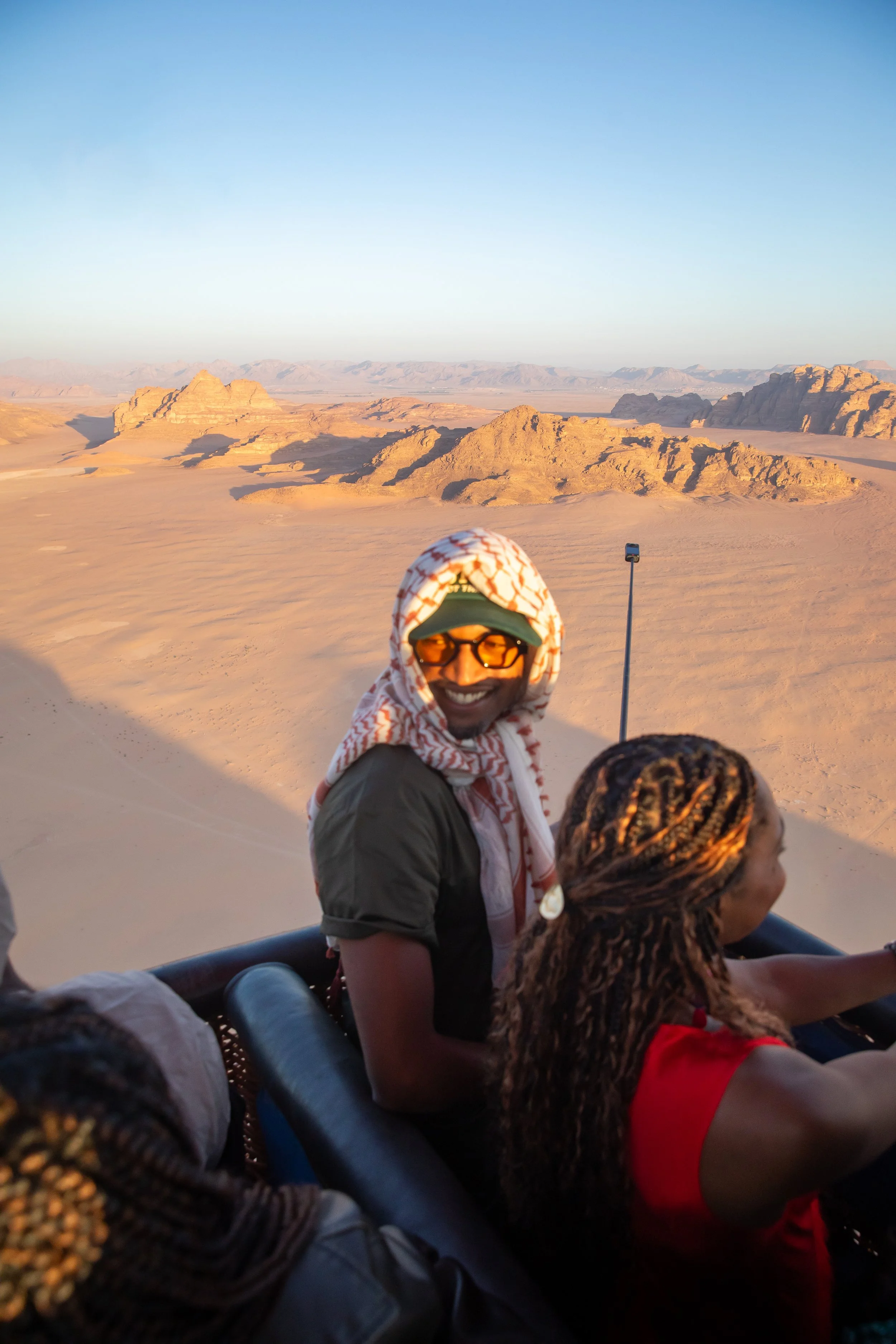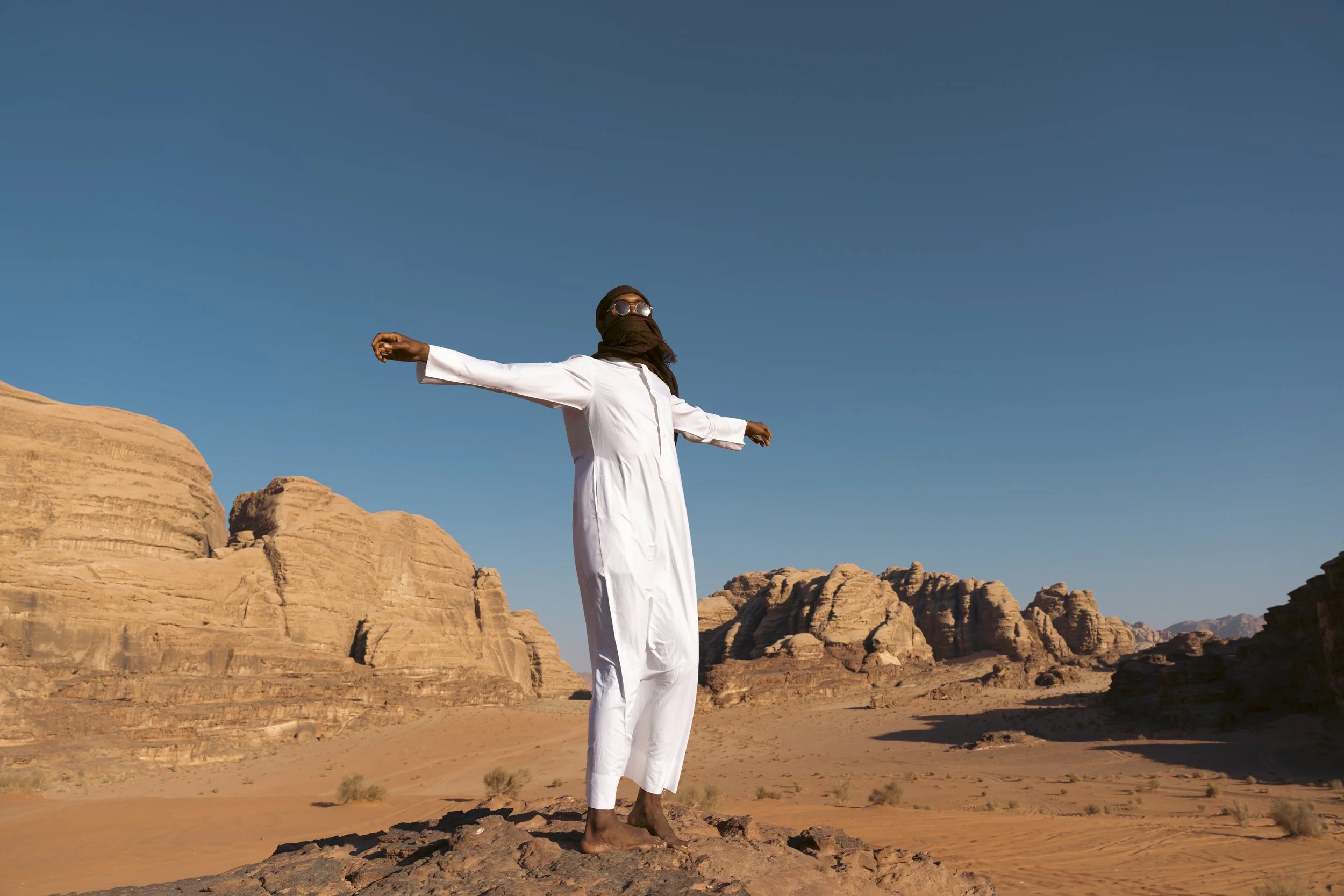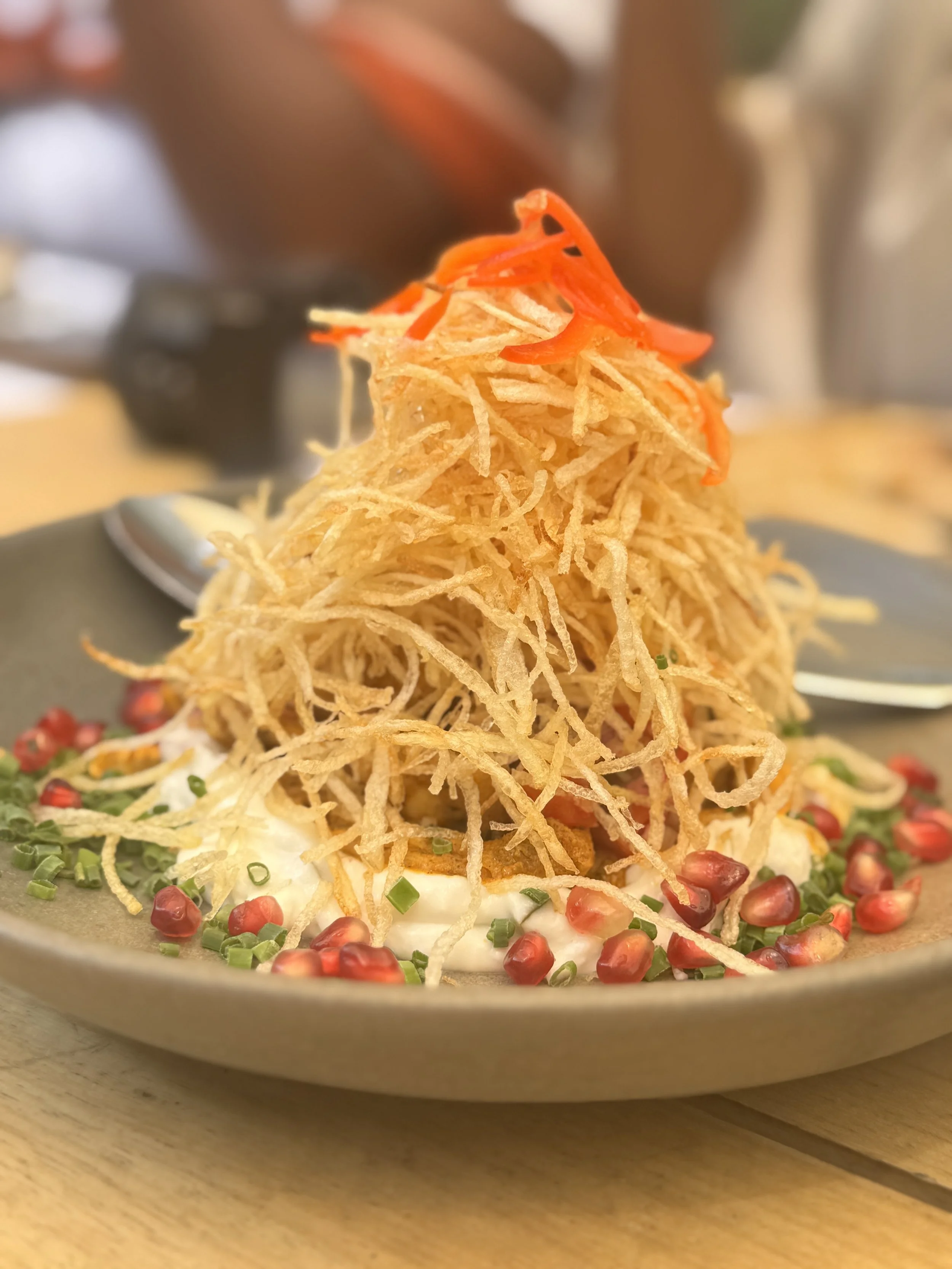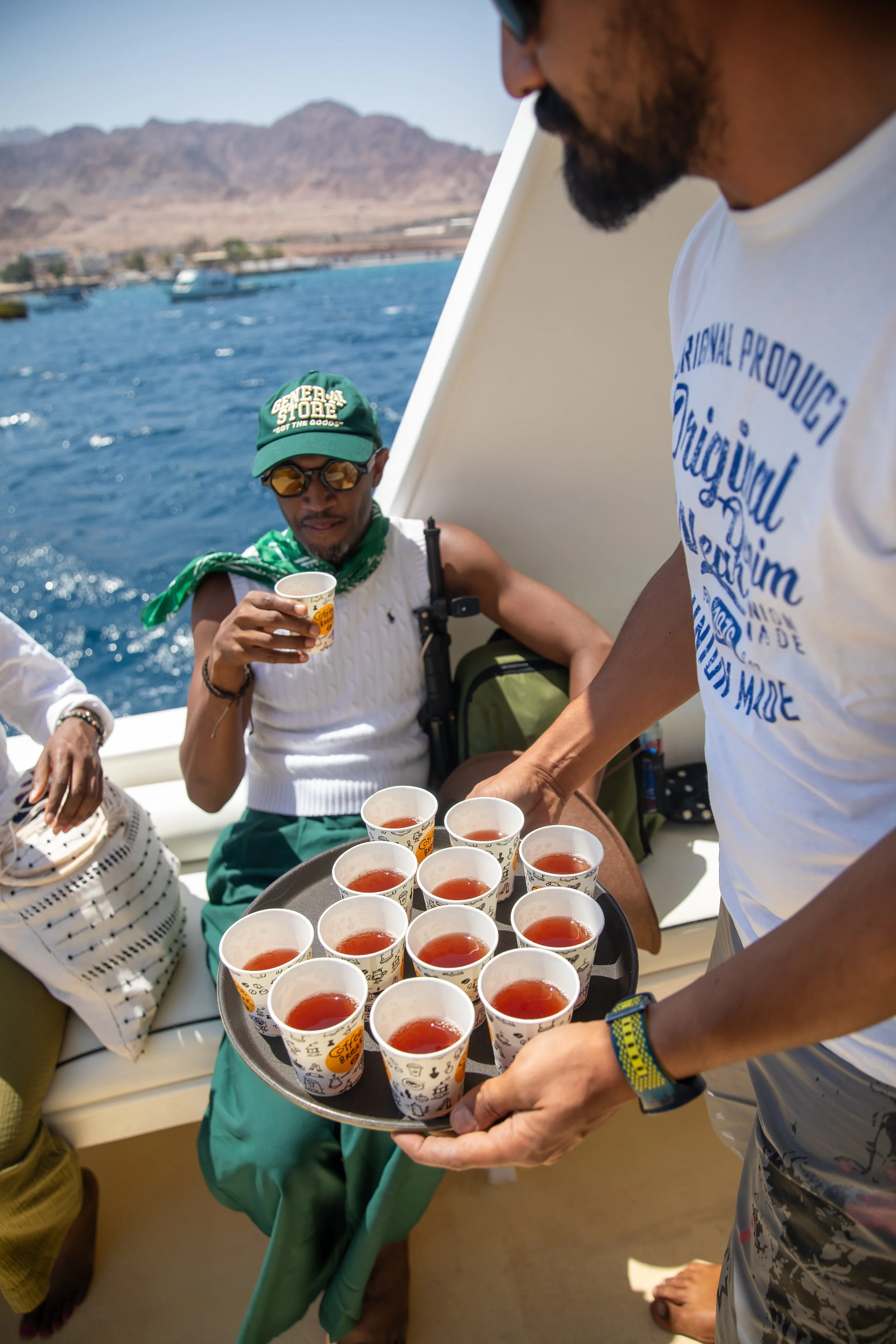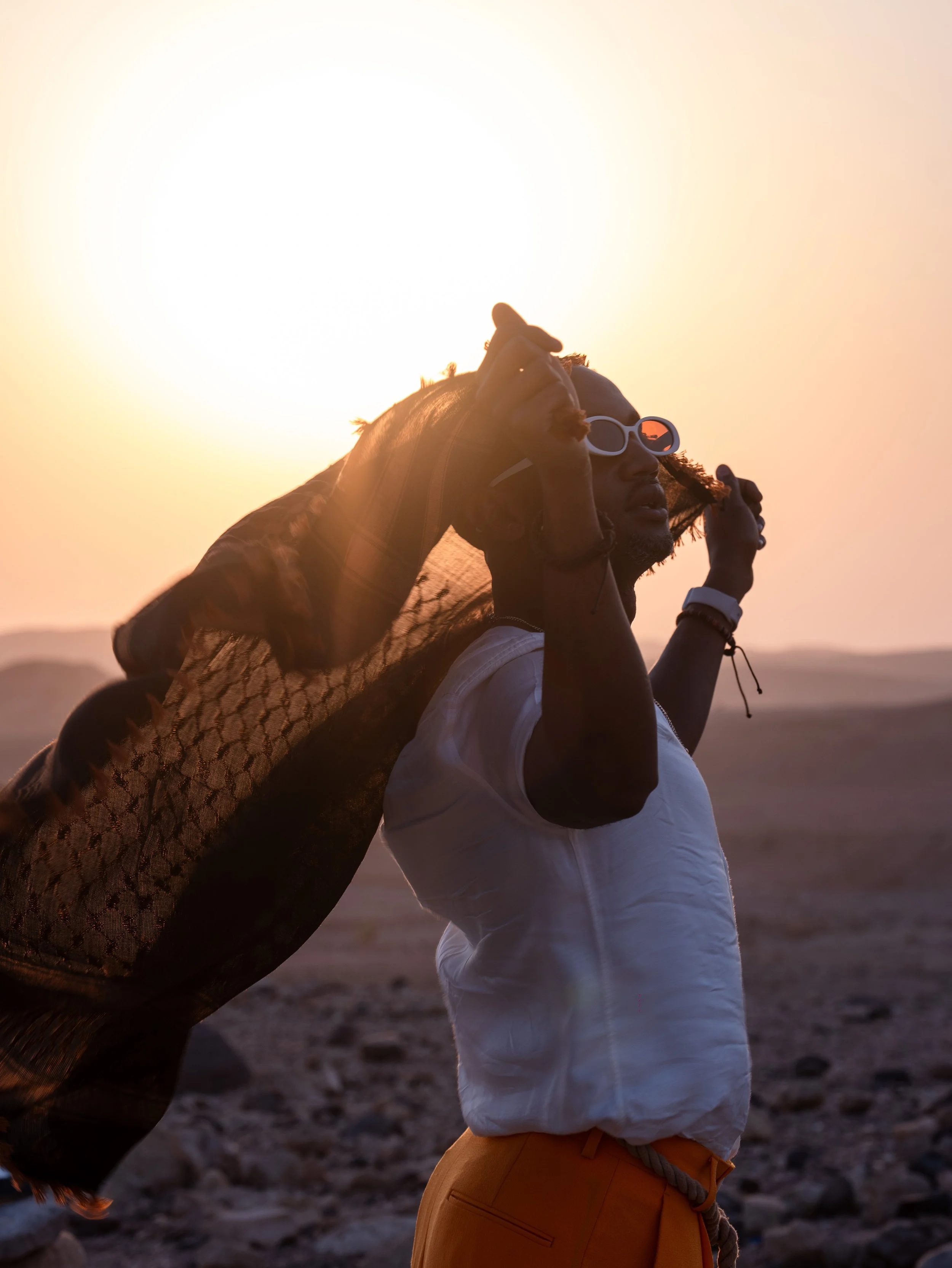The Other Side of Jordan: 10 Days In Ancient History
Some destinations are more than just a vacation — they transform you. Jordan is one of those places. A land where ancient sandstone meets radical hospitality in modern cities, where modern cities sit beside buried kingdoms, and where buried kingdoms brought me adventure, inspiration and more reflection than I planned for.
This wasn’t just a vacation — it was a crash-course in all things beautiful, relaxing and adventurous in the deserts and metropolises of Jordan. Here’s a look at where I went, what I did and how 10 days in Jordan left a permanent mark on me.
Amman: The City of Contrasts
PC: Jeff David King
Where I Stayed
St. Regis Amman — Timeless, elegant and the kind of place that makes you feel instantly grounded. This is the perfect place to start your journey in the capital city of Jordan.
PC: Kevin Stephenson Jr
What I Did:
One of the most unexpected discoveries of Amman was exploring the street art. The city has a growing mural scene — raw, political, joyful and deeply expressive. Street art in Amman is largely legal, especially when done with permission and is embraced by the community. I did a walking tour with Underground Amman that uncovered pieces tucked into alleyways and painted onto the sides of homes and shops. It’s a creative pulse that adds a modern voice to an ancient city, and it gave me a deeper understanding of the stories and resistance embedded in the everyday.
Where I Ate:
Dinner at Jasmine House was a full sensory experience — set in a restored villa with curated art, garden seating and a menu that leans into bold, seasonal flavors. One of the most elevated and intimate dining spots in Amman. The food here was my favorite of the entire trip, and that’s saying something because I absolutely loved the food in Jordan. If you are a foodie, Jordan is not to be missed.
Later, I made my way to the rooftop restaurant, Zenith, at the St. Regis, where the view stretches across the whole city. It’s one of those places where the service is so seamless that you almost forget it’s happening — the food is delivered without the extra pretentious effort or luxury, and the service is top-tier. It’s a perfect way to close the day, watching the city lights blink on as the sun sets and the sky shifts from gold to navy blue.
Hiking from Beit Idis to Rasoun
PC: Kevin Stephenson Jr
The Jordan Trail is a popular hiking trail that runs throughout the entirety of Jordan – from Umm Qais in the North, via Wadi Rum, to Aqaba in the South. It connects all major points of interest and offers a unique perspective of Jordan. The entire trail takes about 40 days to complete and the best time to go is in the fall or spring (to get the best weather). Because I was there in summer, we opted for a section of the trail that provided more shade from the intense sun. This northern trail is lush and unexpected — think green hills, terraced farmland and ancient ruins that feel untouched. Along the way, we passed by Byzantine churches and Roman-era stones crumbling quietly into the landscape. It's a hike, yes, but also a walk through history.
We ended the journey the way all great hikes, even in the heat, should end: with traditional Bedouin tea, sipped slowly while sitting on the ground. Simple, grounding, and unforgettable. And while it sounds counter-intuitive, sipping hot drinks in the heat does actually lead to less sweating.
Eisa Dweekat’s Homestay (PC: Jeff David King)
The Jordan Trail runs right by Eisa Dweekat’s Homestay, which provides an ideal resting spot in Ajloun. His company, Hike Jordan can be hired as a guide for the Jordan Trail along the northern segments, where he knows the trail like no-other (he even co-founded it). Some of the smaller guided tours offered by Hike Jordan follow shorter portions of the Jordan Trail for those looking for a more relaxing hike. (https://hike-jordan.com)
Aqaba: The Red Sea; Facing the Fear
PC: Kevin Stephenson Jr
Personally, this wasn’t just a snorkel trip for me — it was a milestone. I’ve always had a complicated relationship with water, but here, I faced it with the help of my friends, and, specifically, the crew. The Sea Guard crew were kind, patient and created a vibe of safety and encouragement that made all the difference to me. Floating over coral and schools of fish, I realized how much of life is waiting for you just on the other side of fear, and I felt like I could accomplish anything afterwards.
Also, the boat provides a great, healthy lunch and immaculate vibes for a modest turn-up or a restful ride. Shout out to Saif for being a great host and helping me through my fear!
Feynan Eco Lodge: Disconnect to Reconnect
PC: Jeff David King
No electricity. No Wi-Fi. Just candlelight, sounds of nature, solitude and stars that go on forever. Feynan Eco Lodge isn’t just a hotel — it’s a cultural oasis in the desert. The lodge partners with local Bedouin communities to offer eco-conscious travel rooted in tradition.
My favorite part? Hands-down the Bedouin coffee ceremony. Bedouins in Jordan are tribes with nomadic or semi-nomadic roots to the Arabian Desert, historically recognized for their desert-centric way of life, livestock herding and deep tribal ties. They represent an important aspect of Jordanian society and heritage, with many Bedouins now balancing long-standing traditions and contemporary life. A hallmark of Bedouin culture is their renowned hospitality, marked by a deep-rooted custom of warmly welcoming and generously hosting guests.
Sitting with a local Bedouin in his home which is actually a large tent, learning about the ritual and rhythm of preparing coffee, being invited into a space that’s not built for tourists, but for locals with the deepest ties to desert sands — it was intimate, profound and deeply human. Stargazing from the rooftop in the cool night air was the perfect nightcap.
Petra by Day and Night
PC: Kevin Stephenson
Petra is one of those world wonders that actually lives up to the hype. Seeing the infamous Treasury (known locally as Al-Khazneh) — the massive building carved into the rock walls (and featured in Indiana Jones and the Last Crusade as the location of the Holy Grail) — hit me hard. Then I saw it at night for the mesmerizing Petra at Night experience. That was something I will never forget.
Candlelit pathways, soft music echoing through stone and an ancient city glowing under a desert sky. If you don’t mind staying up late, I highly recommend checking it out to see Petra from a different light, and to learn about the mysterious history of this truly incredible piece of ancient history.
Tips: Petra is a HUGE Instagram photo destination spot, and it costs 10 Jordanian Dinar (US$14.10) to get to this iconic spot, and it does require some climbing. As you walk through the rest of Petra, you’ll be approached by a lot of locals asking if you want a donkey ride to the Monastery. However, it’s encouraged to avoid these as a lot of young people are the ones leading the donkey, and officials are trying to discourage this practice so the youth can focus on attending school instead of working at such a young age.
PC: Kevin Stephenson Jr
Where I Stayed
Old Village Resort: This property on the outskirts of the town of Wadi Musa is super special. Built on the grounds of a 500-year-old village, the resort feels deeply tied to the land, as if it grew out of the mountainside rather than being placed there. Stone walls, quiet courtyards and arched ceilings make the space feel timeless, while the views of the Petra mountains are nothing short of cinematic. It’s the kind of place where you actually rest, with a peacefulness to balance the high-energy days of exploring Petra. Bonus: the breakfast spread is elite.
Wadi Rum: Sci-Fi Stillness
PC: Aspen Cierra
Where I Stayed:
Saraya Rum Private Luxury Camp: Luxury tents under an impossible sky. This desert has been the backdrop for movies like The Martian and Dune, and it’s easy to see why. The landscape looks Martian, but the silence is biblical. Desert mornings were slow, warm and wrapped in stillness. And the nights were full of dancing, food, fire, stars and deep, restful sleep.
PC: Kevin Stephenson Jr
On our first morning in Wadi Rum, we took to the skies with Balloons Over Rum and let me tell you — floating over Wadi Rum at sunrise is otherworldly. Watching the shadows stretch across the desert from above, seeing how the wind shapes the dunes — it’s a perspective that makes everything feel both vast and personal. Huge shoutout to the crew at Balloons Over Rum for making it feel safe, calm and unforgettable.
PC: Kevin Stephenson Jr
One of the standout moments was our safari ride deep into the desert, coordinated by Saraya Rum — this was a beautiful (and bumpy!) journey across orange sand and sandstone arches that ended with a special sunset tea. We sat with local Bedouin guides, sipping hot tea with sage and cardamom as the sun dipped behind the mountains. The sky turned gold, then pink, then deep purple. It was quiet, simple and honestly one of the most moving parts of the entire trip.
PC: Aspen Cierra
Wadi Mujib: The Siq Trail
This was a full-on adventure. Hitting Wadi Mujib’s Siq Trail means canyoning through rushing water, climbing ropes and ducking under waterfalls in a narrow red gorge. It’s wild and exhilarating and had me laughing (and yelling) more than I expected. Equal parts playground and proving ground. I found myself just smiling at one point. Life was perfect.
Tips: Wear water shoes (not open toe sandals), go with a guide for the best experience, leave your phone behind. Go-pro or any waterproof camera works well but make sure you have something you can secure it to yourself for the deeper and stronger currents.
The Dead Sea: Ending on the Edge…Literally
Where I Stayed
Kempinski Hotel Ishtar Dead Sea: Soft robes, sea views and the second-largest spa in the Middle East. A must-do is the full spa treatment: float in the sea at sunrise for peace but wait until mid-day to let the mineral-rich mud dry under the sun. Just know that the salt will find every tiny cut on your body and remind you they exist.
PC: Kevin Stephenson
This place feels less like a hotel and more like a self-contained village. The property is huge, and with that comes several different dining options — each offering something a little different in atmosphere and cuisine. Whether it was a poolside lunch, fine dining with a view, or a casual bite before sunset, every meal delivered. They’ve truly mastered the balance between luxury and flavor.
Food, Hospitality and Safety
Food
Jordan is a food-lover’s heaven — but if dairy isn’t your friend, keep your Lactaid pills handy. The mezze (appetizers), grilled meats, sweets and milk-heavy sides are worth it (but you’ve been warned). If you are a sweets person, you MUST try Knafeh, a traditional Arab dessert made with kadayif (spun pastry dough) layered with cheese and soaked in a sweet, sugar-based syrup called attar (I’m drooling as I’m writing this).
Chicken shawarma at Carob House
Hospitality
Jordanians don’t just welcome you—they share with you. There’s a “what’s mine is yours” spirit here that’s rare and refreshing. I was invited into homes, offered meals, and never made to feel like a stranger.
And traveling while Black? (Which is a serious concern for many Black people who have not had good experiences abroad and even domestically.) Honestly—our group was met with so much warmth and curiosity, we often felt like celebrities or royalty. People came up to us with genuine joy, asking where we were from, offering to help, and just wanting to connect. It wasn’t performative—it was deeply human. Jordan made space for us, not just as tourists, but as people.
Tea with the team at Sea Gaurd
Safety
I felt incredibly safe everywhere I went. LGBTQ life is still taboo in much of the region, but I never felt like I had to shrink or erase myself. Police presence is visible, but not oppressive. Crime is low and hospitality is welcoming.
A Note on the Region
While I was in Jordan, the Israeli-Iran conflict intensified. I watched the exchange of missiles from the rooftop of my hotel. It was surreal — and sobering. It reminded me how life is fleeting and to enjoy every moment to the fullest. (I will be publishing another blog about this specifically, so check back for more!)
Jordan is often described as “a quiet house in a noisy neighborhood.” That couldn’t be more true. Unfortunately, the country relies heavily on tourism, and it’s a shame that tensions in the region have caused a significant drop in tourism since the recent war in Gaza began. Though there are signs of promise, the recent conflict hit the country hard. According to the Jordan Times, “The increase came despite a slight decline of 3.7 per cent in June, when monthly tourism income dropped to $619.2 million, largely due to ongoing geopolitical tensions in the region.”
Despite that, the country remains one of the safest and most stable in the region. But being there during that moment made the experience more real.
Final Thoughts
In all, Jordan gave me more than nice views — it gave me a new perspective. It reminded me that travel isn’t just about escape. It’s about connection. Whether I was canyoning through water, sipping coffee with a Bedouin host, or floating between the sky and sea in a balloon, Jordan kept offering these quiet moments that said: You’re here now…Be here now.
And I was.
Jordan isn’t just a place of history — it’s alive today, and, offering unforgettable experiences and welcoming visitors with open arms. #VisitJordan
Credit: Jeff David King

